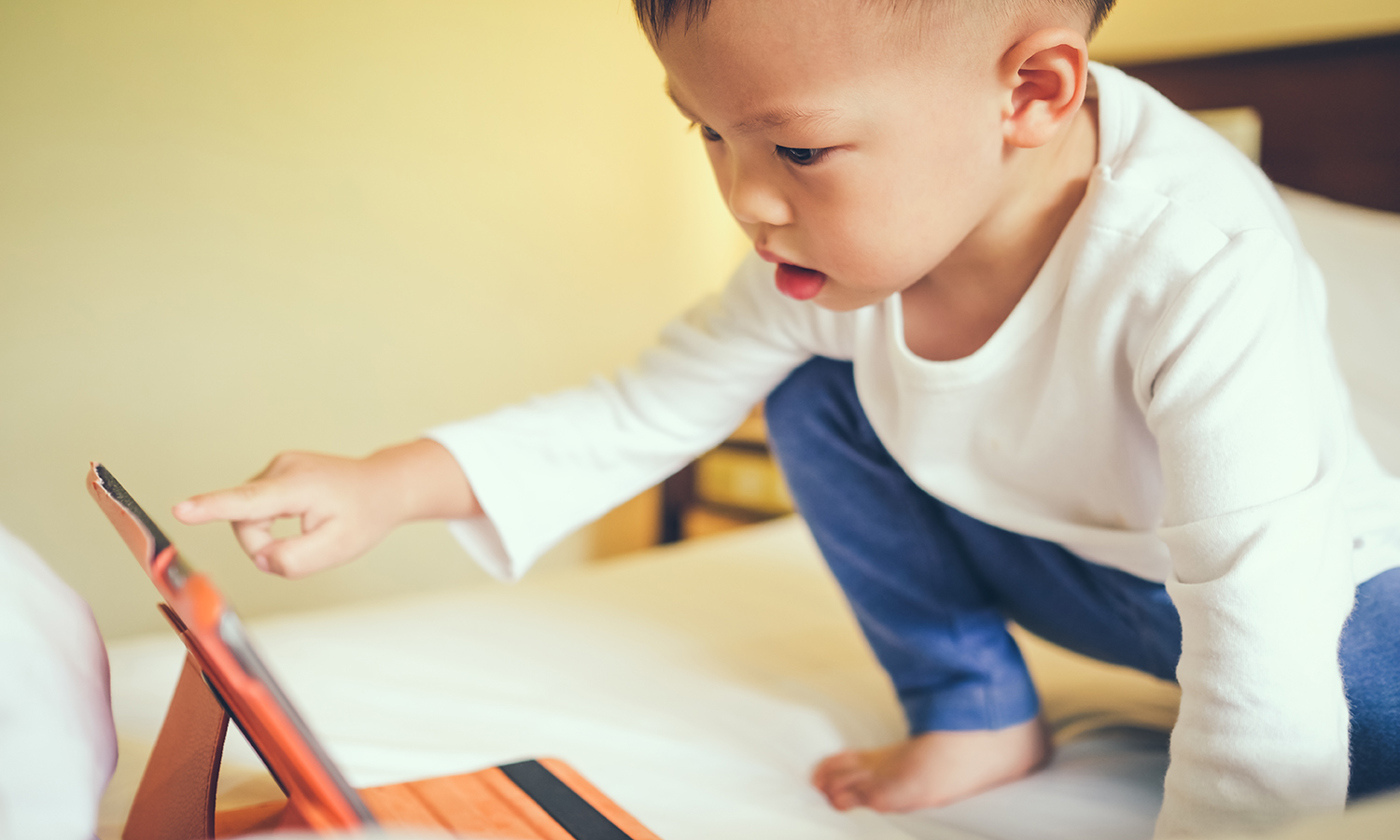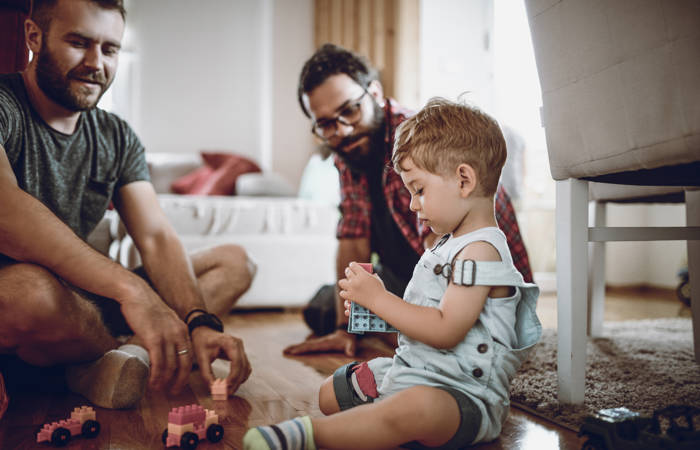Like what you see?
Sign up to receive more free parenting advice.
Thank you for subscribing to our newsletter!
Child Development

iStock.com/yaoinlove
Screens are not good babysitters, but is there such a thing as healthy screen time and a way to decide which apps or programs might benefit learning? Author, speaker and academic Dr Michael Nagel, looks at the research.
It should be self-evident that screens, in all forms, are helpful and effective only when used appropriately. Using an iPad or phone to continually occupy a child in social contexts robs that child from engaging with important aspects of social and emotional development.
In other words, screens are not good babysitters and should not be used as such; every now and then access to a screen may not be a problem, but if the default mechanism for occupying a child is a screen this can present long term developmental and behavioural issues.
The use of screens for occupying a child in place of allowing its innate curiosity with the world to unfold is ultimately an inappropriate replacement for active play, engagement with other children and interactions with adults.
Before unpacking key aspects of how to make the most out of screen time it is important to note that there is a rich body of research evidence spanning many decades telling us how children grow, learn and develop. Equally important to note is that most of that evidence does not place screen usage at the forefront of healthy development and learning.
In fact there is much to be said about limiting screen time with children or at the very least managing it well to ensure it does not turn into one of many challenges some children, and adults for that matter, are facing.
Screen and internet addiction, for example, are now widely recognised mental health issues.
Understanding that, the following information is offered as a framework for healthy screen usage should it occur, linked to principles of development and the psychological science of learning.
Not all that long ago television was the newest technology in most people’s homes. Then came videos and the personal computer. Today children are being raised in a digital environment that is far removed from how previous generations of parents and grandparents engaged with screens.
Screens are everywhere and range from television screens that occupy substantive wall space to smartphones that can be held in the palm of your hand.
Importantly, we are only beginning to understand the full range of benefits and challenges associated with screen usage and it is likely that as technology continues to advance we will learn a great deal more.
Importantly, the consensus from most psychologists and child development experts is that children under the age of two have no screen time. Instead, they engage with the real world as much as they can and are stimulated by interactions with other people and/or engagement with concrete objects such as toys, blocks, etc.
After two years of age, things become a bit murkier. How much time a child beyond the age of two should spend on a screen is highly contested and not easily answered. This is likely due to the ever-changing nature of technology and how pervasive screens are now becoming.
When screens are being used there are a few things parents can consider in terms of healthy consumption along with a framework for deciding what apps or programs might prove beneficial in terms of learning.
The idea that children play an active role in their learning has a long research history and suggests that positive learning outcomes occur when children actively build knowledge rather than just act as passive observers or wait for someone to tell them what to do.Dr Michael Nagel
Stay up to date with the latest news and articles from First Five Years
Thank you for subscribing to our newsletter!
Over the past couple of decades a new disciplinary field of research and scholarly endeavour, dubbed the ‘Science of Learning’ has emerged. This term was first used in the early 1990s through the creation of the Journal of Learning Science. Initially derived from aspects of research within psychology, linguistics, animal behaviour, brain imaging, computer science, neurobiology and others, the Science of Learning focuses not only on what should be taught to children but also how they best learn.
In 1999, the Science of Learning secured its academic and research prowess at the juncture of psychology and education with the publication of How People Learn: Brain, Mind, Experience and School, a report from the United States National Research Council.1 The Science of Learning is now considered a cornerstone of any substantive educational endeavour and it provides five key components for parents and teachers alike to consider when determining the value of using a screen device or any app set out as educational or a tool for learning.
First, and likely the least problematic aspect of a screen device in terms of learning, is that any educational activity should be engaging. In the context of learning however, engagement allows a child to focus on a single activity and not have their attention shifted from one thing to another. The ability to stay on task and undistracted supports learning in that the brain is designed to only ever pay attention to what we are interested in or what threatens us. Needless to say, screens by their nature, are often engaging. However, too many distractions such as ‘pop-up’ features can compromise a learning activity.
Human beings tend to learn best when distractions are minimised and our memory functions are optimised when we can pay attention to something rather than when we must shift our attention from one thing to the next and back again. We are not actually designed to multi-task and learning experiences for children should minimise or eliminate such impediments and as such screen activities should not be too overwhelming or ‘busy’.
The second part of the Science of Learning puzzle acknowledges that a screen device should provide activities and opportunities for children to be cognitively active. The experience must be about more than swiping and tapping a screen and implies an active role in the learning as a ‘minds-on’ endeavour.
The idea that children play an active role in their learning has a long research history and suggests that positive learning outcomes occur when children actively build knowledge rather than just act as passive observers or wait for someone to tell them what to do. For example, a ‘minds-on’ activity or app might allow children to choose among story characters to further a story line or build musical compositions to develop an understanding of chord progressions. ‘Minds on’ work engages executive functioning of the brain’s prefrontal cortex. Put more simply, the activity should make a child think and problem solve.
Third, a screen activity that has been identified as educational or some form or learning activity should, by association, have a learning goal. Whatever is being used, in other words, must go beyond engagement and ‘edutainment’ and rather have some type of learning goal at the core of its design. This is where parenting a device becomes important and decisions about what children will engage in must be made by an adult. Children can be easily attracted to things with just the right amount of bells and whistles but without any substantive learning enterprise. Deciding what is educationally sound is an adult’s responsibility.
Fourth, screen activities must be meaningful. Meaningful learning literally occurs when children find the meaning in what they are learning and are able to not only connect new material to existing knowledge but expand their current knowledge to create new understandings as opposed to simply engaging in rote memory activities.
Whenever we encounter new information we are better equipped to use it and store it in long term memory when we find meaning in it and/or can relate it to what we already know. In this sense learning activities need to be age, and developmentally, appropriate. Asking a four-year-old to engage in something beyond their capacity leads to frustration while asking an eight-year-old to do something their younger siblings find easy becomes boring. Again, parents play a role in helping find meaningful activities.
And finally, most good learning activities are socially interactive. High-quality interactions are those that occur with knowledgeable social partners or in collaborative learning situations. All aspects of healthy development and learning are greatly enhanced through social interactions. Engaging with screen devices is best done with other people whenever possible. A screen device is a mechanism for having children playing and learning together and not the focus of the learning activity.
Cooperative and collaborative games and activities are far superior for learning than those that isolate a child as a single user. Even co-viewing of television programs where children discuss what they are seeing or where adults ask questions about what is on the screen can be powerful social endeavours and beneficial learning enterprises. In the end, and like much of the information noted above, adult supervision and input plays an important role in determining the utility and efficacy of positive screen time.
1 Bransford, J. B., Brown, A. L., & Cocking, R. R. (Eds.). (1999). How People Learn: Brain, Mind, Experience, and School. Washington, DC: National Academy Press.

Dr Michael Nagel
Associate Professor, School of Education, University of the Sunshine Coast
See more






